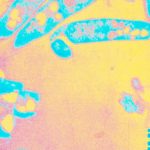Link to Pubmed [PMID] – 35166073
Link to DOI – 10.1002/art.42090
Arthritis Rheumatol 2022 Feb; ():
The importance of IL-17A in the pathogenesis of Axial Spondyloarthritis (AxSpA) has been demonstrated by the success of IL-17A blockade. However, the nature of the cell populations producing this important pro-inflammatory cytokine remains poorly defined. Accordingly, we characterized major IL-17A-producing blood cell populations in AxSpA, with reference to entheseal biology, with a focus on mucosal associated invariant T-cells, (MAITs) a population known to be capable of producing IL-17.IL-17A production from 5 sorted peripheral blood cell populations, namely MAITs, γδ T-cells, CD4+T-cells, CD8+T-cells and neutrophils was evaluated pre- and post-stimulation with PMA, the calcium ionophore A23187 and β1,3 glucan. IL-17A transcript and protein expression were determined using nCounter Technology and ultra-sensitive SimoA technology, respectively. MAITs from control human axial entheses (n=5) were further characterized by flow cytometric immunophenotyping, qPCR and IL-17 production assessed following stimulation.In blood, on a per cell basis, MAIT cells produced the highest amount of IL-17A compared to CD4+ (p <0.01), CD8+ (p <0.0001) and γδ T-cells (p <0.0001). IL-17A was not produced by neutrophils. Gene expression analysis also showed significantly higher IL17A and IL23R expression in MAIT cells. Stimulation of blood MAIT cells with αCD3/CD28 and IL-7 and/or IL-18 induced strong expression of IL17F. MAITs were present in the normal enthesis and showed elevated AHR, JAK1, STAT4 and TGFB1 transcript expression with inducible IL-17A protein. IL-18 protein expression was evident in spinal enthesis digests.Both blood MAITs and resident MAITs in axial entheses contribute to IL-17 production and may play important roles in AxSpA pathogenesis.









